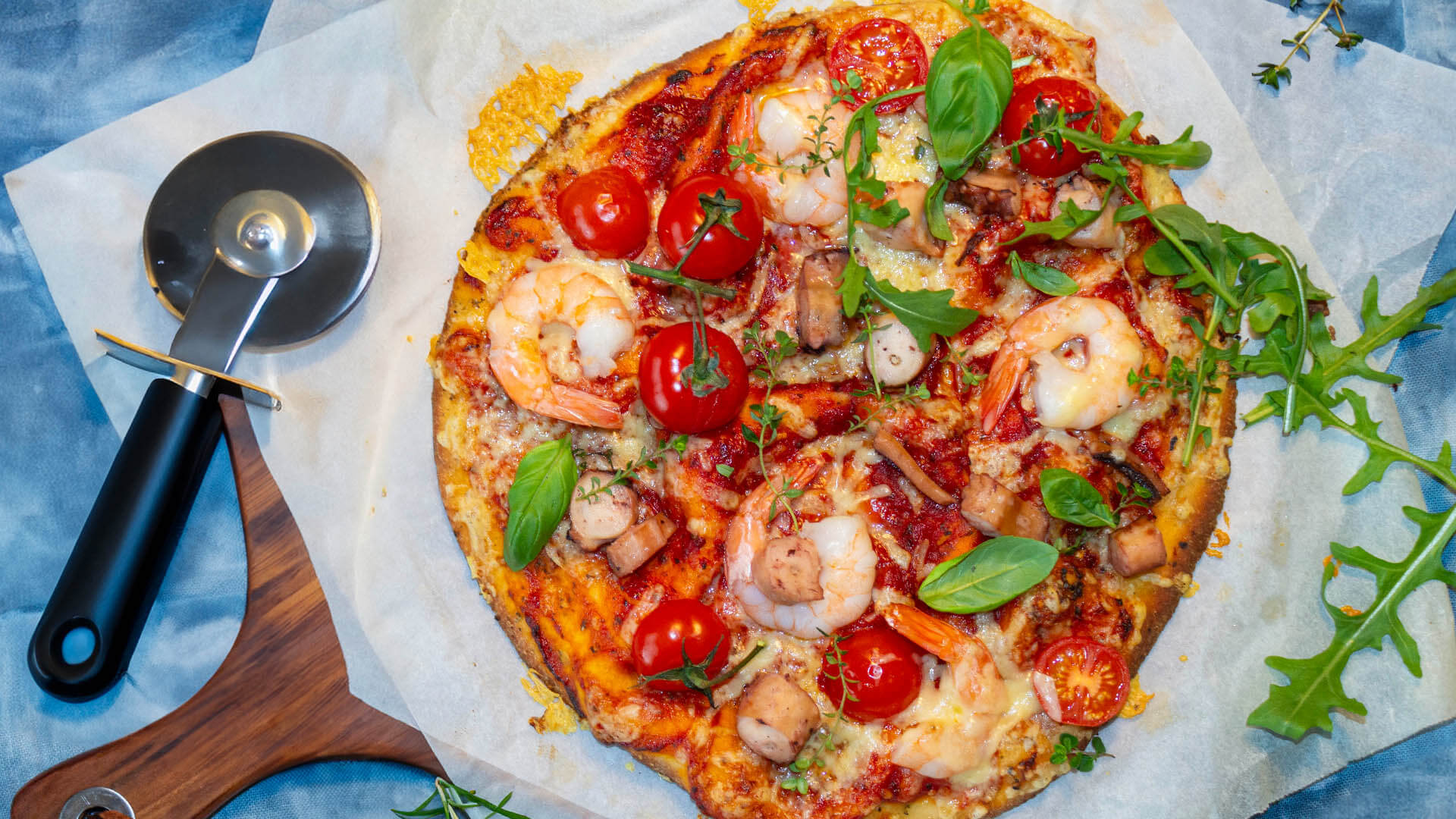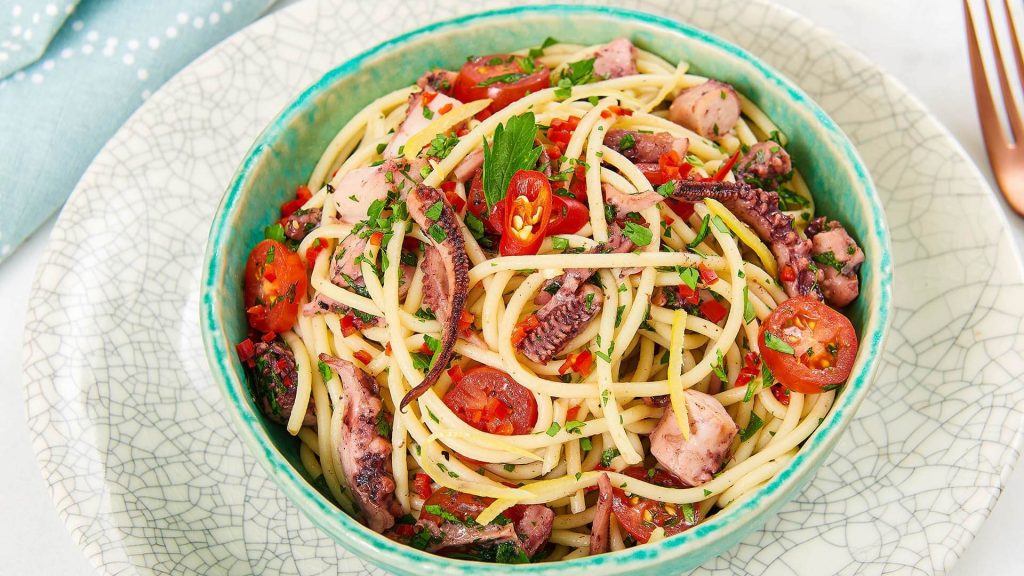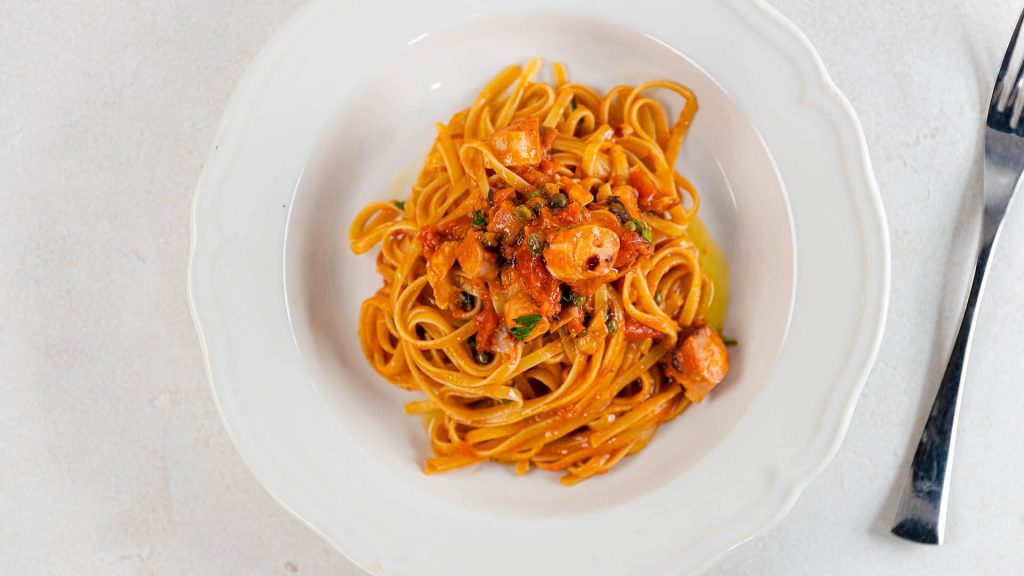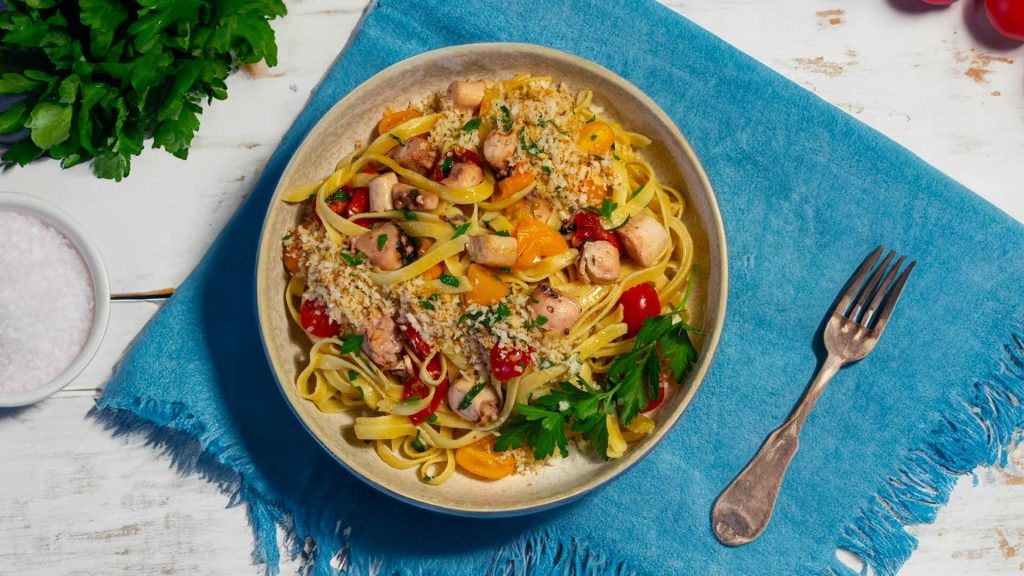
Mediterranean Seafood Pizza
)
Cook Time
30 Minutes
Yield
2
Difficulty Level
Quick, Easy
Ingredients
- 2 Medium Pizza Bases
- 1/3 cup pizza sauce
- 1 x Safcol Tapas Squid 111g
- 12 cooked peeled prawns
- 1 cup Shredded Pizza Cheese
- 12 cherry tomatoes, halved
- 1 tablespoon fresh thyme leaves or 1 teaspoon dried thyme
- ½ cup basil leaves
- 1 cup washed baby rocket (optional)
Instructions
- Preheat the oven to 220°C
- Place the pizza bases on 2 baking trays. Spread with the pizza sauce.
- Bake for 10 mins until starting to crisp up.
- Take pizzas out of the oven, spread the hot pizza bases evenly with the squid, prawns and tomatoes, season generously and scatter with cheese and thyme leaves.
- Bake for approximately 10 more minutes until the pizza bases are crisp and cheese melts.
- Serve hot scattered with basil leaves and rocket.
| Servings: | 4 |
| Ready in: | 30 Minutes |
| Ingredient: | Squid |

Mediterranean Seafood Pizza
This Mediterranean seafood pizza combines the oceanic, briny flavours of fresh seafood with the vibrant and zesty ingredients typical of Mediterranean cuisine. Seafood brings a salty, slightly sweet, and delicate ocean flavour. The brininess of the prawns contrasts with the earthier, drier flavours of the toppings, offering a juicy bite and texture.
Overall, this Mediterranean seafood pizza has a light, fresh, and well-balanced flavour, emphasizing the salty, briny seafood and Mediterranean ingredients.
If you like squid, be sure to check out our squid recipes page for more inspiration!
Tips
A drizzle of olive oil adds smoothness and richness, while a squeeze of lemon provides acidity and a citrusy brightness that lifts the flavours of the seafood and herbs.
Did you know?
Mediterranean flavours are deeply rooted in a rich history shaped by ancient civilizations, trade, and agriculture across the regions surrounding the Mediterranean Sea, including Southern Europe, North Africa, and the Middle East. The cuisine reflects a convergence of influences from Greek, Roman, Phoenician, and Ottoman empires, which introduced a variety of ingredients and cooking techniques that persist today. The mild, sun-drenched climate allowed for an abundance of olives, grapes, and wheat, creating staples like olive oil, wine, and bread that became pillars of Mediterranean diets. Trade routes across the Mediterranean also brought in exotic spices, such as cumin, coriander, and cinnamon, from as far as Asia, along with ingredients like rice and citrus. With a focus on fresh, local produce, the cuisine emphasizes flavors that are bold yet balanced, with common use of herbs like rosemary, thyme, and oregano, which grow abundantly in the region. The flavor profiles highlight simplicity, where ingredients like garlic, lemon, and olive oil elevate dishes without overpowering them, reflecting a culinary philosophy that values seasonality and natural taste. Mediterranean flavors are thus a testament to centuries of cultural exchange, geographical bounty, and a deep-rooted connection to land and sea.




